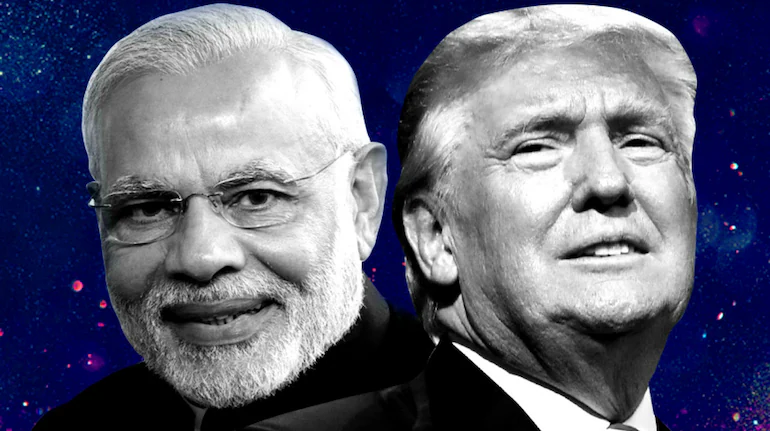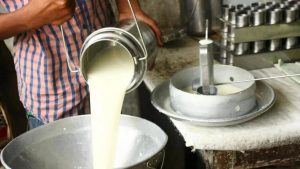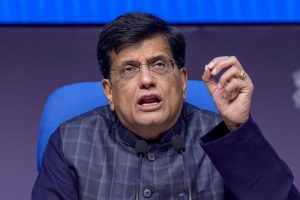
As yet silhouette, the policy outline will soon emerge reshaping global trade patterns, currency pegs and perhaps forex values.
The dollar has already started to strengthen against many global currencies including the euro. For Americans, a rising dollar may somewhat negate inflationary impacts of higher priced, tariff slapped imported goods.
More expensive for US consumer
Dr Deborah Kay Elms, Head of Trade Policy at the Henrich Foundation, disagrees.
“He has talked about using tariffs for a lot of purposes against a lot of countries. We do not know which of those are going to come to pass,” Elms said.
“I’ll talk about a few things that he’s discussed. One of them is a universal tariff in the range of 10 to 20 per cent leading to escalation in prices causing a huge inflationary shock that would cause US consumers and potentially US businesses importing products to buy less. Some firms will absorb the cost of the tariffs, others will not. Some may escalate above the tariff levels. But the point is that all of a sudden, everything being sent to the United States is going to become more expensive for the US consumer,” she added.
Window of opportunity for India
Gary Hufbauer, Senior Fellow at the Peterson Institute for International Economics (PIIE), summarised the impact of the wide range of Trump tariffs as hurtful for the US economy but a window of opportunity for the Indian manufacturing sector.
“If Trump puts 60 per cent tariffs on US imports from China, that will drive a lot of manufacturing activity to other countries. India could be a beneficiary if it adopts a policy of welcoming foreign manufacturing firms.
“If Trump puts 10 per cent or 20 per cent tariffs on all US imports (apart from the 60 per cent tariffs on China), that will not damage India’s competitive stance. But it’s more likely that Trump will use the threat of tariffs to bargain for concessions. I don’t know what Trump would want from India, but the list of US complaints about Indian trade practices are plenty,” he said.
Complaints on Indian trade practices
Hufbauer quoted the United States Trade Representative (USTR): “India maintains high applied tariffs on a wide range of goods that in some cases range up to one hundred and fifty per cent. India’s bound tariff rates on agricultural products are among the highest in the world, averaging 113.1 per cent and ranging as high as 300 per cent”.
American exporters have been complaining about India modifying its tariff rates on an ad hoc basis rendering India’s already complicated custom system to arbitrary administrative intervention. There are also concerns about India’s custom evaluation process.
Given the large disparity between World Trade Organization (WTO)-bound and applied rates, India has considerable flexibility to change tariff rates at any time, creating tremendous uncertainty for US exporters.
Trade barriers review
Will India be forced by Trump to review its own trade barriers to US made goods? But doing that, especially on agricultural products like edible oils, could well spell trouble for any party in power.
“Yes,” replied Dr Ajay Sahai, Director General, Federation of Indian Export Organisations (FIEO). “The President-elect will use tariffs as a threat to negotiate with countries. Being now in the government, they would not like the tariffs to result in price escalation as it could spark uproar against the tariff regime,” said Sahai.
He added that the US government agencies would ensure that if the 60 per cent tariff is imposed on China, they identify other supplier countries with lesser tariffs or none at all.
“This would ensure the continuity of the supply chain without increasing prices in the US market,” he said.
Pressures on India
What kind of pressures will India face? One likely sector is pharma, where the USTR has said, “India maintains very high basic customs duties, in some cases exceeding 20 per cent, on drug formulations, including life-saving drugs and finished medicines listed on the World Health Organization’s list of essential medicines.”
Then there are price caps that help more domestic companies gain a foothold.
“The US demand may be for reduction in market taxes on some medical and diagnostic equipment. For example, on stents. Domestic stents are half the price of foreign stents. US companies are very interested in supply. The point is that we should be ready with our basket of offer because I don’t think anything will be available to us on a free basis,” added Sahai.
Bilateral talks
Bilateral negotiations may turn complicated both from the political and religious point of view. India for instance may have reservations against imports of dairy products.
The contentious issue with dairy is that animals in the US are grown on a non-vegetarian diet, which will affect the sentiments of the Indian community.
Sahai agreed that dairy is little sensitive and since dairy directly affects the farmers also, “it’s politically sensitive”.
There is a possibility that Indian negotiators lower import duties on high-end imports from the US like Harley Davidson.
Impact on US from tariffs
For the Trump administration, tariffs will be an active source of income with hundred per cent of the collected tariff going straight to the Federal treasury.
“The argument that Trump is trying to make is that besides making money off all of the tariffs coming in, firms will be driven to invest in the US and not outside,” said Elms of the Henrich Foundation.
“If the product was made outside the US, then it becomes part of this 10 to 20 per cent across the board tariff. The hope also is that the tariff on imported goods may actually make some US manufactured goods cheaper. So, some sectors in the US economy would benefit from Trump’s policy, but the disruption will be high and anyone who relies especially on imported raw materials, parts, components or finished goods will have a real problem,” she added.
Price increases
PIIE’s Hufbauer said: “If Trump imposes a wide range of tariffs, they could easily raise the US price level by 1 per cent-2 per cent, with a striking impact on iconic items, like toys, autos, avocados, musical instruments. Price level increases between 2020 and 2024 was one of the main reasons Kamala Harris lost the election. Trump has to be aware of this adverse political impact of his tariff policy.”
Further, he said, the evidence from Trump’s first term tariff policies is that they actually hurt manufacturing employment, by raising the price of imported components. As well, analysis done at the Peterson Institute found that they raised consumer prices by around 1 per cent on average.
“Contrary to Trump’s belief, I am skeptical that heavy reliance on tariffs in his second term will boost US manufacturing employment,” pointed out Hufbauer.
Manufacturing in US
Elms argued that tariffs alone will not make manufacturing attractive in the US. There are reasons that people do not manufacture in the United States, including non availability of raw materials or that it is cheaper to manufacture products somewhere else, despite the new tariffs.
A sentiment echoed by FIEO’s Sahai. “In the case of the US, investments would flow in only in high-end products because the US cannot be competitive in labour intensive sectors like footwear or apparel,” he said.
He added that if the US imposes tariff on high-end engineering products or electronics, those will move from US to Vietnam, from China to Vietnam. “Vietnam will have to vacate space in the labour-intensive sector because they hardly have much labour available. That kind of intense labour manufacturing will be an opportunity for India to grab,” he observed.
Fallout for India
A major issue that needs addressing is how to make Indian exporters move up the value chain. Even otherwise India may not be fully geared to cash in on the opportunity to fill up for China (as part of China Plus One strategy).
As the Trump takes office on January 20, Indian manufacturers battling low margins, navigating supply chain complexities and complex government regulations, will struggle with trade barriers, the impact of which may well be a further decline in GDP.
No matter the cry for de-dollarization, the rupee is fast-plunging against holding currencies and is unlikely to compensate the diminishing value of the export earning basket. The flight of foreign capital and lackluster corporate earnings are dragging down Indian share prices. With China taking long-awaited economic stimulus measures, global money is starting to return to depressed Chinese equities.
Liquidity issue
Sahai lamented the inability of liquidity faced by Indian manufacturers. He wanted increased flow of credit to the industry. Indian banks are risk averse and want to cover everything with collateral, as high as 50 to 60 per cent despite the Export Credit Guarantee Corporation of India (ECGC) covering banks to the extent of 90 per cent of the default for credit up to 80 crores, he said.
“The recent declining GDP numbers can also be attributed to the lack of growth of credit because if India aims at 8 per cent plus GDP growth, credit growth has to be at 20 per cent plus which is not happening. The other critical issue, is on the labour front, where we have number of issues like restrictions on overtime hours, regulations on night shifts,” said Sahai.
Meanwhile, the weakening of the rupee against the dollar has taken away its advantages for exporters who face increased costs for raw materials, offsetting the benefits of a weaker rupee.
Devaluation of rupee
Sahai is of the opinion that the rupee may further devalue against the dollar and find its market value if the RBI stops propping it.
“There is a variance in the base year for indexation of the rupee. As for that base year, in terms of RBI, the rupee needs to be undervalued by around 4.5 per cent and for the World Bank it has to be around 8 per cent,” he said, adding that despite universal tariffs a country with a weaker currency against the dollar could get a price edge over a higher dollar valued currency.
Elms is expecting this sudden shock to nurture different currency alignments and exchange rate changes along the way. So, if you’re very dependent on export, and those exports are going to become much more expensive, there may be currency adjustments as well.
“There is a growing concern over the use of the US dollar not so much for tariff purposes but because of the challenges of using it in a potentially weaponised financial system. So probably not the BRICS but over time there will be firms who say let’s use a different currency besides the US. But I think it’s going to take time,” she said.
Bitcoin role
Could the Bitcoin then become a trade currency?
Elms does not rule out the possibility but does not see it happen in the near future. “Let’s look at one of the stable coins like Tether. Apparently, Tether transactions on daily basis are higher than the transactions daily on Visa, Master, Visa credit cards. Some of these are attached to real physical movement of goods or people or whatever,” she said.
Definitely, the post Trump tariff era is unchartered waters even as domestic manufacturers and service providers fight over thin margins to survive.

















